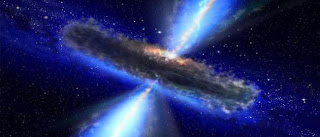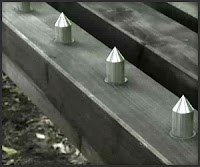Quasars Light Can Possibly Map Universe's Structure And Spread
Space scientists must have envied Columbus since he was able to set sail and go to places where no one else has been. But, as scientists at Case Western Reserve University found out, they don't have to travel far to figure out the structure and spread of the universe. Instead of sail, they depend on quasars.
It is indeed ground-breaking. With millions more quasars at far-away distant expected to be discovered in the coming years, scientists are offered an unprecedented opportunity to re-examine the Big Bang. It is indeed a rare chance, it is like to be able to travel back to check out the infant universe when it was just a fraction of what it is now.
Image [Click to enlarge]
The idea struck the researchers as they were analyzing the visible light out of quasars. Apparently the light patterns analyzed over time were deemed to be consistent across quasars when compensated by redshift. This quasar redshift is a phenomenon which can be explained this way: when a universe keeps on expanding, the quasars are getting further away from us, and the light becomes redder, and apparently time passed more slowly.
Put it simply, we are able to see how the universe evolves when information is conveyed to us with time delay effect. As more quasars get discovered, we would be able to re-evaluate the different phases of universe when we examine the first lights emitted from those quasars. The implications are nothing to scoff at. When we can take control of time, we are in control of our destiny, if not history.
Image [Click to enlarge]
As redshift expands, it implies that the light source is older and further away. Consistent with the working of researchers, more and bigger samples of quasars are expected to confirm the patterns.
One such mission is spread headed by De-Chang Dai, Amanda Weltman, and Dejan Stojkovic. Apparently light samples were collected and analysis of dark matter in and around the Milky Way was deliberated. A sample of 14 quasars was decided and the light patterns were recorded and examined over an extended period of time.
Image [Click to enlarge]
The findings were consistent, that everything we thought we know about lights applies. When the light curve was compared to a straight line, slopes would invariably appear. By working on these slopes, scientists are able to calculate individual quasar's redshifts, often with margin of error no more than 2%.
The second experiment to determine the size of redshift is more challenging; the researchers took two quasars and compared individual segments of the curves, in order to find the best fits. And the result is an astonishingly accurate of 1.5% points.
The co-relation drawn here is significant. For example, a star with redshift size of 7.1 means that we are seeing lights when the universe assumed 1/8 of its current size. And the implications are huge. If this method of co-relating light source and universe size is proven to be accurate, scientists would have millions of markers available to them (subject to the number of quasars are discovered) which allow them to construct a comprehensive model that traces back to potentially the Big Bang era and we should be able to find out whatever happened to our universe.






Comments
Post a Comment